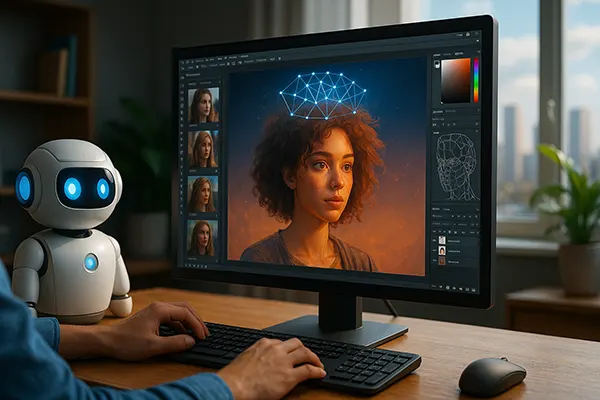
How Neural Networks Are Transforming Computer Graphics: From Gaming to Architecture
In recent years, neural networks have significantly reshaped the field of computer graphics, enabling new levels of realism, automation, and efficiency. From video games and digital effects in cinema to architectural design and virtual walkthroughs, artificial intelligence is redefining what’s possible. As we enter mid-2025, the convergence of AI with creative technologies continues to accelerate. Below is a comprehensive look into how neural networks are driving innovation across different sectors of computer graphics.
Neural Networks in Modern Gaming Visuals
The video game industry has long relied on technological advancements to push the limits of immersion. Today, neural networks are being used to upscale textures in real-time, generate realistic animations, and simulate dynamic environments. Nvidia’s DLSS (Deep Learning Super Sampling), for instance, uses AI models to render high-quality frames with less computational power, boosting frame rates without sacrificing visual fidelity.
Additionally, procedural content generation powered by neural networks enables studios to create vast, believable worlds with fewer manual inputs. This reduces production time and offers players more diverse gameplay experiences. AI can also adapt gameplay environments based on player behaviour, creating truly personalised virtual worlds.
Another application lies in character modelling. Tools like Adobe Firefly and GAN-based technologies allow developers to create lifelike avatars and NPCs by training models on human anatomy, motion capture data, and environmental physics, thereby enhancing realism and emotional depth in storytelling.
Real-Time Rendering and Deep Learning
One of the most transformative aspects of neural networks is their role in real-time rendering. Traditional rendering requires vast processing power, but deep learning algorithms can predict lighting, shading, and texture blending far more efficiently. This makes ray tracing in real-time more accessible, even on consumer-grade hardware.
Game engines such as Unreal Engine 5 are integrating AI-driven features for smarter rendering pipelines. These systems can now predict what a player will likely see next and pre-render those scenes using deep neural nets. This not only speeds up performance but allows for smoother visual transitions and reduced latency.
AI-based anti-aliasing methods also continue to evolve, improving visual clarity by dynamically adjusting based on in-game lighting conditions, textures, and movements, resulting in sharper and more coherent scenes.
Architectural Visualisation and Smart Modelling
In architectural design, neural networks are becoming indispensable tools for architects and 3D artists. One major breakthrough is AI-assisted generative design, which allows architects to input functional parameters and have AI generate multiple viable layouts or structures. This enables professionals to explore more possibilities in less time.
Neural networks are also used to enhance rendering speed and accuracy for photorealistic visualisations. AI algorithms can generate lighting simulations, texture maps, and spatial reconstructions from basic sketches or 2D plans, drastically improving turnaround times.
Additionally, AI aids in reducing human error and increasing precision in modelling. By learning from existing architectural blueprints and real-world measurements, neural networks can suggest corrections or improvements during the design process, ensuring structural integrity and visual coherence.
AI in Urban Planning and Environment Simulation
Neural networks are not only transforming building design but also playing a crucial role in large-scale urban simulations. AI models can analyse population data, traffic flows, and land use patterns to suggest efficient layouts for residential and commercial zones.
Simulation of environmental impact has also become more accurate. Neural networks can predict how buildings will affect wind flow, sunlight exposure, and energy consumption using real-time data. This leads to more sustainable and cost-effective designs.
Furthermore, AI-driven visualisation tools are helping stakeholders and clients experience proposed projects via immersive VR walkthroughs that are generated almost entirely by machine learning systems, providing a clearer vision before a single brick is laid.

Film, Animation and Digital Effects
Film production and animation are benefitting greatly from AI-generated visual effects. Neural networks can automate tasks such as rotoscoping, motion tracking, and colour correction. This reduces manual workload and allows artists to focus on creative decisions.
GANs (Generative Adversarial Networks) are being used to create hyper-realistic digital humans, de-age actors, and produce deepfake content for cinema with astonishing accuracy. These tools are also vital in creating CGI environments from textual descriptions or concept art.
Neural rendering – the fusion of deep learning with traditional rendering – is enabling high-quality image synthesis with fewer data inputs. Studios are using this to blend real and synthetic footage seamlessly, saving time and costs while maintaining visual integrity.
Enhancing Animation Workflow with Neural Tools
Animation pipelines are increasingly incorporating neural networks for faster keyframe generation and movement prediction. Tools like DeepMotion and RADiCAL allow animators to capture performances using just a smartphone, turning them into usable 3D motion data in real-time.
AI also plays a role in style transfer – animating characters in the artistic style of a specific director or reference without manually re-drawing each frame. This reduces production time and ensures stylistic consistency across scenes.
Sound design and lip-syncing are no longer limited by human effort alone. Neural models analyse speech patterns to automatically sync facial animations and voice lines, allowing for realistic dubbing and localisation across different languages.
